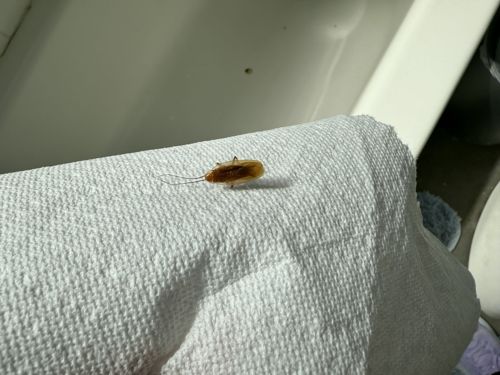German Cockroach
Scientific Name: Blattella germanica
Order & Family: Blattodea, Ectobiidae
Size: Adults are typically 1.1 to 1.6 cm (0.43 to 0.63 inches) long.

Natural Habitat
They prefer warm, humid environments close to food and water sources. Common indoor habitats include kitchens, bathrooms, and other areas of human dwellings, often found in cracks, crevices, behind appliances, and under sinks.
Diet & Feeding
Omnivorous scavengers. They consume a wide variety of food scraps, organic debris, and household items, including starches, sweets, grease, meat products, pet food, and even non-food items like soap, glue, and toothpaste when other options are scarce.
Behavior Patterns
They are primarily nocturnal, hiding during the day and becoming active at night to forage for food and water. They are known for rapid reproduction and can quickly infest an area. They are often found in groups and are highly adaptable, making them difficult to eradicate.
Risks & Benefits
Potential risks include spreading pathogens (bacteria, viruses, fungi, parasites) that can cause food poisoning, dysentery, allergies, and asthma. They can contaminate food and surfaces with their feces and shed skins. They do not generally provide direct benefits to humans or ecosystems in an urban or domestic setting, and are considered a pest.
Identified on: 9/9/2025